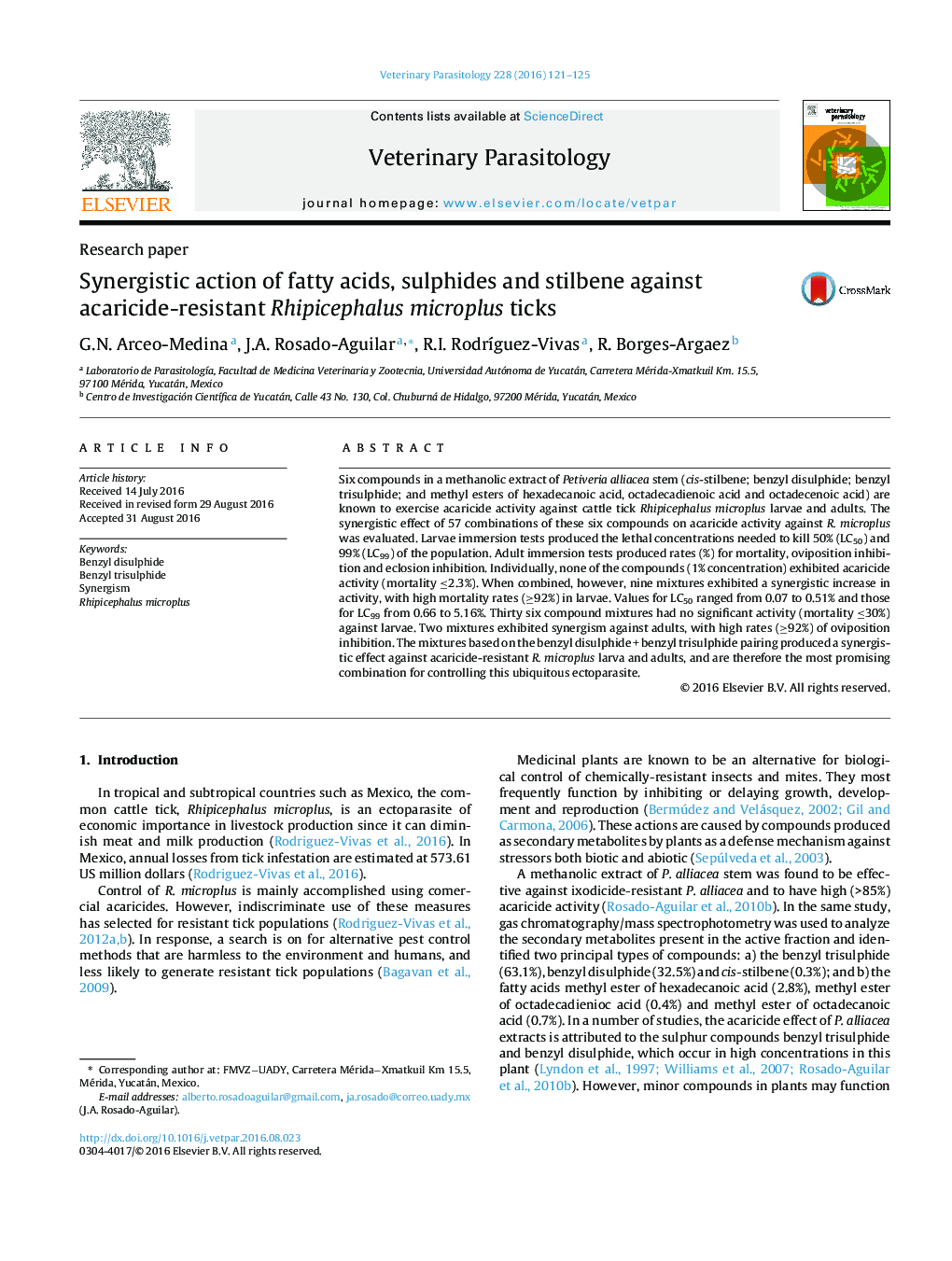| Article ID | Journal | Published Year | Pages | File Type |
|---|---|---|---|---|
| 5801957 | Veterinary Parasitology | 2016 | 5 Pages |
â¢Six compounds identified in Petiveria alliacea were bioassayed alone and in mixtures on R. microplus.â¢Mixture of sulfur compounds was the most important synergist compounds to kill R. microplus larvae.â¢Mixture of sulfur, fatty acid & stilbene compounds had lower lethal concentration on R. microplus larvae.â¢Mixture of sulfur compounds caused high synergism to inhibit eclosion on R. microplus engorged females.
Six compounds in a methanolic extract of Petiveria alliacea stem (cis-stilbene; benzyl disulphide; benzyl trisulphide; and methyl esters of hexadecanoic acid, octadecadienoic acid and octadecenoic acid) are known to exercise acaricide activity against cattle tick Rhipicephalus microplus larvae and adults. The synergistic effect of 57 combinations of these six compounds on acaricide activity against R. microplus was evaluated. Larvae immersion tests produced the lethal concentrations needed to kill 50% (LC50) and 99% (LC99) of the population. Adult immersion tests produced rates (%) for mortality, oviposition inhibition and eclosion inhibition. Individually, none of the compounds (1% concentration) exhibited acaricide activity (mortality â¤2.3%). When combined, however, nine mixtures exhibited a synergistic increase in activity, with high mortality rates (â¥92%) in larvae. Values for LC50 ranged from 0.07 to 0.51% and those for LC99 from 0.66 to 5.16%. Thirty six compound mixtures had no significant activity (mortality â¤30%) against larvae. Two mixtures exhibited synergism against adults, with high rates (â¥92%) of oviposition inhibition. The mixtures based on the benzyl disulphide + benzyl trisulphide pairing produced a synergistic effect against acaricide-resistant R. microplus larva and adults, and are therefore the most promising combination for controlling this ubiquitous ectoparasite.
